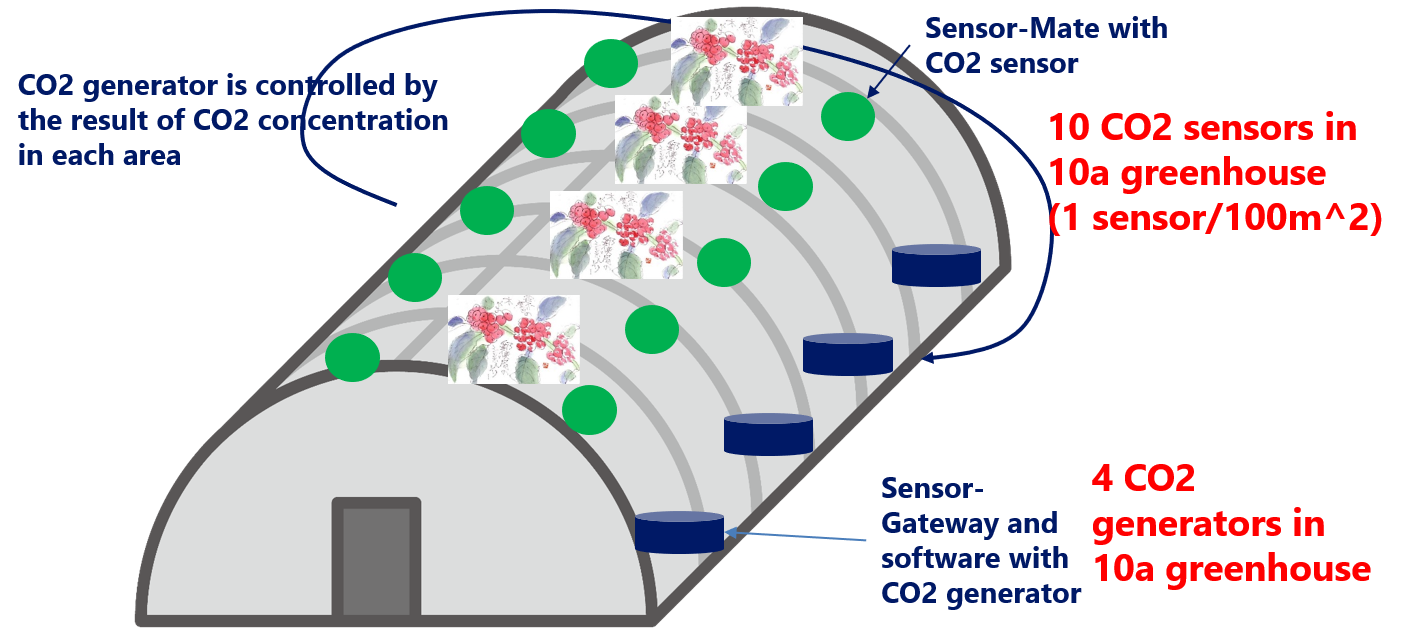Learn from mistakes! The first step of field application of greenhouse agriculture IoT

Since the dawn of IoT, we have conducted numerous demonstration experiments and applications in agricultural IoT.
- Learn from mistakes! The first step of field application of greenhouse agriculture IoT
- Support for solving labor saving in agriculture with IoT (3)
- Support for solving labor saving in agriculture with IoT (2)
- Support for solving labor saving in agriculture with IoT
- Improve agricultural profits by introducing autonomous IoT
- IoT Agriculture: Plant monitoring
In that process, we have repeated many successes and mistakes.
We will describe typical examples of house agricultural IoT that should be considered as the first step in field application.
Installation
In agricultural IoT, sensors will be installed in places where there are many plants.
- Depending on the installation position, there were places where radio waves did not reach
- Radio waves may be blocked when surrounded by water-rich objects such as plants.
Plants contain a lot of water, so water absorbs radio waves.
We use the Sub-GHz band (920MHz band specific low power radio), but water still absorbs radio waves.
It is very important to decide the installation position in consideration of such an environment.
Equipment
The house is a humid environment.
- There was a case where the sensor failed and replacement work was performed.
- Even in the environment inside the house, waterproof and moisture proof are necessary
Since it is inside the house, it does not rain, but when heavy condition for sensor node, the humidity rises to nearly 100%.
Therefore, it is necessary to install equipment with a moisture-proof environment.
Sensing
Sensor nodes are installed in many places in the area.
- The value sensed differs depending on the location.
- We can monitor the growing environment of the plant, but could not monitor the condition of the plant itself.
For example, when installing a CO2 sensor, if the number of sensor nodes to be installed is small, you can only see the CO2 concentration in one place where you installed it, but in reality, the condition of the plant depends on the location in the area. Since they are different, the sensing values are also different.
This is why sensor nodes need to be installed at multiple points.
Tele-Sentient is a platform that assumes the installation of low-cost, low-power consumption sensors at multiple points.
Also, you cannot directly see the condition of the plant.
For this reason, it is necessary to utilize multiple sensor data to indirectly grasp the data.
Operation
The house to be installed is usually located in a remote place, and especially the installer does not go to the house frequently after installing it once.
- Initially, we did not have a system for remote system maintenance, so we had to visit the site for each maintenance.
This is now commonplace, but when it was first installed, we didn’t expect this to happen.
In the real fields, you will face problems due to various unexpected causes, such as sudden outages.
At that time, it is expensive and time-consuming to go to the site to grasp the situation of one device.
Therefore, not only remote monitoring but also remote maintenance can be performed by building a remote maintenance environment.
Tele-Sentient is developing to address many previous cases of remote monitoring.
In this way, Tele-Sentient develops after grasping the issues that can be obtained from many field application results.
- The land-based shrimp farming initiative in Nakacho, Tokushima, was broadcast on NHK Tokushima
- The news of “A Land-based Aquaculture Monitoring System” introduction to Naka, Tokushima is released on PR TIMES.
- Our IoT system was delivered for a new “land-based shrimp farming” business in Naka Town, Tokushima
- Introduction of our new service: IoT proposal for office environment improvement
- Corona measures: 3 Dense avoidance and ventilation promotion! Developed multi-point CO2 concentration measurement and remote monitoring system in IoT
- SAFE Technology Overview (3)
- SAFE Technology Overview (2)
- SAFE Technology Overview (1)
- Agent Based Modeling Technology (5)
- Agent Based Modeling Technology (4)
- Agent Based Modeling Technology (3)
- Lecture on autonomous IoT initiatives utilizing CO2 sensors
- Agent Based Modeling Technology (2)
- Exhibited IoT solutions for hot bath facilities
- Measuring CO2 concentration in an office conference room
